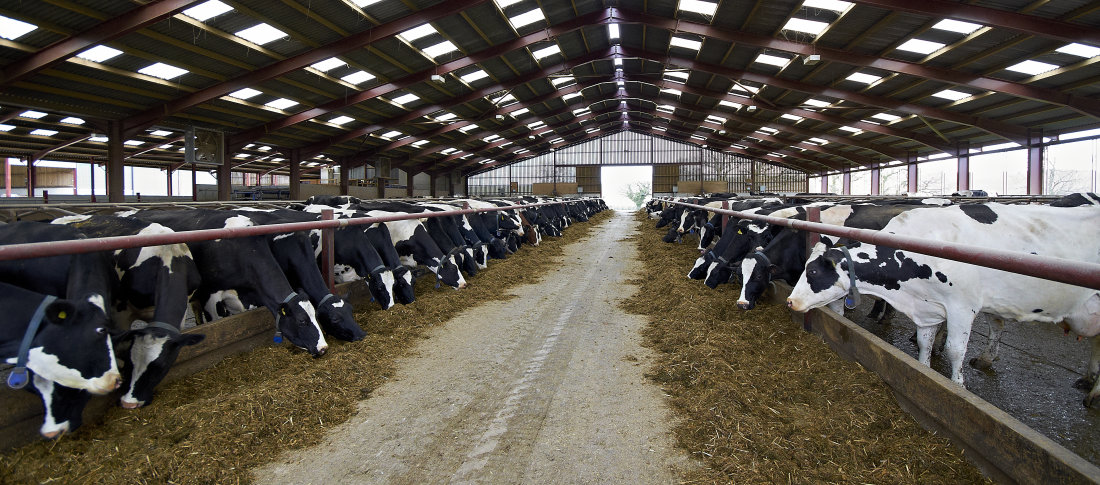Earlier this month, Volac were featured in British Dairying. You can read the article below.
Historically, the US is a leader in ruminant fat research. Volac’s Dr Richard Kirkland talks to Dr Adam Lock, an associate professor specialising in fat and fatty acid nutrition in the Department of Animal Science, Michigan State University. Adam hails from a Devon dairy farming family.
What fats should I be feeding?
The importance of any diet formulation is knowing your contract and what are you being paid for to maximise returns. Most US dairy producers are currently being paid for yield of fat and protein produced, so they are formulating diets to increase milk solids. Clearly some UK contracts offer a payment benefit for increasing milk fat, so it’s important to feed the right fats for what you are trying to achieve.
So, there’s a US consumer trend back to dairy products?
Traditionally in the US, milk protein has been worth more than fat, however right now milk fat is worth more as butter consumption is increasing for the first time in 50 years. Recommendations to reduce hydrogenated vegetable oil use has led to, for example, McDonalds replacing margarine with butter on their toast and bagels.
How are producers responding?
They know to supply the right building blocks if their cows are to make fat and protein. There is no evidence that increases in fat and protein yields will slow down so it’s all about formulating and making available the right nutrients to support efficient production.
Is fat the forgotten nutrient?
Traditionally, fat supplements have been based on a single raw material that has suited a manufacturing capability. However, the days of feeding fats simply as a source of energy and treating all fats the same are gone.
So what’s emerging?
Whilst we’ve transitioned from crude protein to amino acids, we are now moving from simply feeding ‘fat’ to thinking about individual fatty acids. We have to consider where fatty acids are sourced from, which specific fatty acids to supply and when to supply them, since different fatty acids can play different roles at different times through lactation.
Most fats in a dairy cow’s diet are made up of five different fatty acids: C16:0 (palmitic); C18:0 (stearic); C18:1 (oleic); C18:2 (linoleic) and C18:3 (linolenic).
Traditionally in the US, two types of dry fat products have been available – calcium salts of palm fatty acids, high in C16:0 (palmitic acid) and C18:1 (oleic acid), and saturated fat prills – based on C16:0 and C18:0 (stearic acid). In the last five to 10 years, the use of ‘high-C16:0’ products has exploded, driven by research showing the ability of C16:0 to improve milk fat production.
In future, I anticipate some nutrition companies will design a portfolio of products comprising various fatty acids aimed to maximise a cow’s efficiency, productivity, profitability and sustainability.
One word of warning; don’t introduce a fat supplement to the diet without considering what other fatty acids are already there from the basal ingredients. In fact, fatty acids are found in every single feed ingredient including fresh forage.
Are there other reasons for feeding a ‘high-C16:0’
Yes, C16:0 has a double benefit; it increases energy density in the diet and can drive both milk fat concentration and milk yield. Emerging research suggests that this fatty acid may also increase fibre digestibility, but we have yet to fully understand why.
What about the other major fatty acids – C18:0 and C18:1?
Stearic acid (C18:0) is one we would not choose to feed because it has poor digestibility, particularly at higher levels of intake.
Oleic acid (C18:1) is itself highly digestible and can also improve overall fatty acid absorption. It’s the second most common fatty acid found in milk. We have interesting evidence that C18:1 is particularly effective in driving milk yield in high producing cows (50 litre +). In the US, supplements containing C18:1 and C16:0 are traditionally fed to improve feed efficiency, body weight gain and milk yield.
Omega-3?
Yes, omega-3s (C18:3, linolenic acid, and the very long chain fatty acids found in fish oil) are potentially important, particularly in diets containing low levels of green forage. Key potential benefits are for improved fertility and health in the early lactation cow.
Do fatty acids need to be fed in rumen-protected form?
For unsaturated fatty acids – C18:1, C18:2 and C18:3 – yes. For example, for oleic acid to exert its positive effects, it needs to be offered in ‘rumen-protected’ form, eg. by conversion to a calcium salt.
Where is the research going?
To understand the role of fatty acid supplementation throughout lactation; eg, we need to understand the role of C16:0 and C18:1 in fresh and very high lactation cows.
I am interested in the impact of fatty acids on absorption of nutrients in the intestine, fibre digestion in the rumen, partitioning of energy toward body weight, and ultimately their impact on milk production.
Do genetics/genomics impact on response?
Yes, we believe so. The key is understanding the genetics of partitioning energy between milk and body condition which we are still working on.
